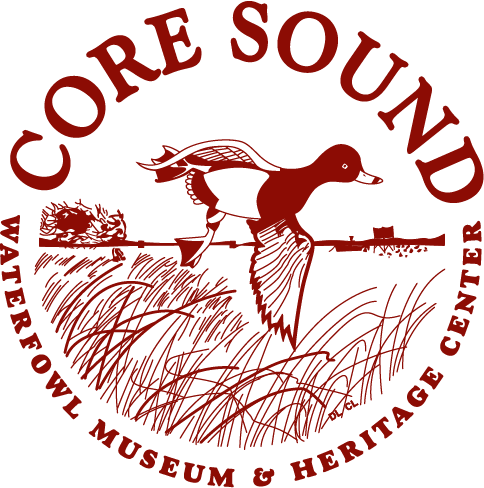Saltwater Highways
Port Light captures the rich history of the trade, civic, and kin connections that extended across the sounds of North Carolina from the Outer Banks to mainland ports. From the first tenuous Colonial and piloting settlements to the viable fishing villages of the early to mid-twentieth century, boats were the primary mode of transportation, and key to the development of early America.
Captains in wooden boats with canvas sails set out from Shackleford Banks, Core Banks, Portsmouth Island, Ocracoke, and Hatteras Island as a matter of day-to-day routine and outright survival. They braved the ever-changing conditions of Core, Pamlico, and Albemarle Sounds, navigating by star and pocket watch, their sights set on the faint port lights of the mainland.
Boats were the trucks and buses of the day, transferring basic provisions and items of trade. En route to New Bern, Washington, Engelhard, Elizabeth City and other ports, boats delivered whale oil, salted fish, and waterfowl packed in barrels to help keep mainland towns and plantations running. On the return trip, boats brought essentials such as corn for grinding, coffee, flour, nails, lumber, and livestock to banks dwellers.
More than basic provisions were transferred by boat. Mailboat captains shared local news by mouth and other news by mail. Mail and freight boats carried salesmen to hawk newfangled products, teachers to impart smarts to village children, and preachers to deliver salvation. Even new blood was introduced to the local gene pool with incoming “mail boat brides.”
Boats connected water bound people and communities. They held whole families and lone fishermen, midwives and newborns, coffins of the departed, lawmakers and outlaws. Much has been written about the “Graveyard of the Atlantic,” the treacherous shoal-ridden route off the coast of North Carolina used by vessels from New York to Charleston and the West Indies until the early to mid 20th century. The Port Light project, funded by the National Maritime Heritage Grant Program, looks in the other direction, highlighting connections from the Outer Banks to the mainland ports across Albermarle, Pamlico, and Core Sounds.
Port Light was funded by the National Park Service Maritime Heritage Program in an award to the Core Sound Waterfowl Museum and History Center on Harkers Island. Principal researchers were Susan West, a fisheries specialist and journalist from Buxton, North Carolina, Barbara Garrity-Blake, a cultural anthropologist from Gloucester, North Carolina, and Karen Amspacher, Director of the Core Sound Museum.
Project partners include the Bit & Grain creative project team that designed the digital exhibit and Dare County, North Carolina, School Media Specialist Mollee Holloman, who developed the Port Light curricula for North Carolina 8th graders.
The audio excerpts featured in the Port Light exhibit were edited from oral history collections of the National Park Service, the Coastal Voices project (www.carolinacoastalvoices.com), the Lawrence S. Earley collection, and interviews collected during the course of the project. Project interviews were transcribed by Mary Williford and Rachel Kirby.
Historical photographs were provided by the Outer Banks History Center, North Carolina Maritime Museum, the Museum of the Albemarle, University of Louisville and private collections.
The Port Light Project extends deep gratitude to the following participants who shared their expertise: Steve Goodwin, Ellen Cloud, Pam Morris, R.S. Spencer, Jr., Marco Gibbs, Al Schmitt, Flavius Spencer III, Blount Rumley, Billie Jean Mallison, Charles Meekins, Herscal Williams, and Elsie Scarborough Sawyer. We also thank Doug Stover and Jami Lanier of the National Park Service and Michele McCabe at the North Carolina State Historic Preservation Office who provided encouragement and assistance.


